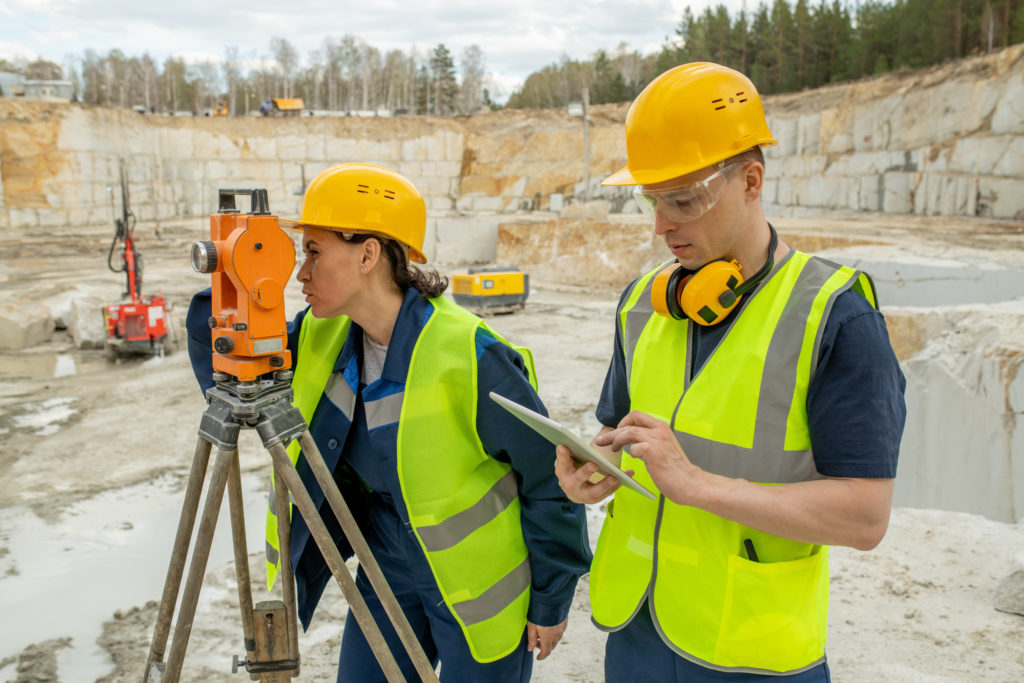Losing the next generation of women in mining
According to a 2021 McKinsey study, women represent an estimated 8-17% of the global mining workforce. In addition to low labour force participation, the drop-off from entry level to executive for females in mining is the most dramatic across all industries studied.

Here in Canada, the Canadian minerals and metals plan has a 30% goal of women participation in mining, but according to the Mining Industry Human Resources Council (MiHR), the industry has a long way to go.
Research shows both low rates of entry for women into the industry and high rates of attrition as their careers unfold. Why is increasing representation of women in the mining industry such a hard goal to move?
The Northern Miner Group hosted Edumine’s second annual panel discussion on what the points of resistance are for women at each stage of a mining career, what can be done to challenge or change these, and how to create a shift in the culture and perception of the mining industry to not lose the next generation of women. This article is based on that conversation.
Labour competition or collaboration
Jamie Wolcott, director of labour market information for MiHR, stated that there are several performance indicators in the mining industry but noted that the most common question he gets is about women’s representation in the mining industry.
According to a MiHR labour study, there has not been much improvement since women’s representation in the mining industry has come to the attention of companies. There has been only 3% improvement over the past decade.
Some may view this as a mining only problem, but it is across many industries and largely comes down to the labour pool. There is a small labour pool that the mining industry calls upon. “We did not lose women when they were picking their industry, we lost them with selection of occupation.”
What this means is that the problem of women representation is not a mining specific problem but across the entire labour market. Walcott proposes that what might be a better metric to track female participation is mining’s share of labour supply. This metric proposes a different strategy.
Wolcott offers a different strategy that would focus on labour force development rather than solely recruitment. Competition with other industries alone will not move the needle, but working with other industries to grow a larger labour pool of women could. The ideal approach is going to vary by occupation and a strategy needs to be tailored to each occupation.
If people are going to choose mining related trades and careers, how can the industry grow the potential labour pool?
Dana Pray, an experienced recruiter in mining, calls on the industry sector to create greater interest with women at an earlier stage in their careers. The mining industry has great reach into universities, but people are not aware of this as a career choice. The mining industry needs to focus on helping women make the choice for mining as a career.
Pray points out that there is a serious need to improve the representation of the “rough” mining industry. Mining is no longer pickaxes and shovels, but this is the image that people unfamiliar with the industry think of. There is a world of technology and innovation in the mining industry that is not being communicated.
It is not just a poor representation of the industry, but also people’s dissatisfaction with their own roles. Monica Moretto, vice-president of sustainability, diversity, and inclusion at Pan American Silver, noted that 35-45% of the world’s labour force is looking to change their careers.
In addition, Moretto noted that between 2015 and 2019, there has been a 33% decrease in women going into engineering at school and 22% decrease in women going into geology. This was prepandemic and since then this problem has grown.
Moretto sees the workforce is changing and the way the mining industry works is not attracting the next generation. The need is greatest at the foundation of mining operations to build a future. It is not just education, but it is also about retention. It is word of mouth that keeps people at companies.
To capture more people, Moretto believes the focus needs to be on retention and creating a proud culture of mining. Technological innovation needs to be embraced to create changing roles focused on innovation and technology because the older generation is retiring soon, and a new culture of work is coming.
A previous generation’s points of pride are often not passed onto the next, so how does the mining industry create a work culture that a tech-savvy female millennial generation would be proud of?

A changing culture in mining and a sense of belonging
According to Andrea Carter, a talent consultant to the mining industry, North America stands at the face of a huge talent risk because business education is not adopting equity, diversity, and inclusion principles. In addition, she adds one more key metric to consider: belonging.
Moreover, the employee-organization relationship has primarily been modelled through a “fit-in or risk being excluded model” rather than valuing the importance of diverse perspectives and experiences that contribute to organizational growth. This can often leave employees not feeling welcome in the mining industry.
Carter used data to explore the question of who feels they belong in the mining industry and revealed that one of the most important factors is a sense of belonging are gender, ethnicity, and career level.
Carter’s statistical analysis demonstrated that there is an important relationship between belonging and gender. When further analysis of the relationship was investigated, the relationship revealed that those who identify as male perceive belonging with meaning and a higher willingness to contribute to organizational goals.
Companies need to create new metrics to attract and retain the next generation of women and make women feel like they belong in the industry. Organizations need to create the sense of belonging from the beginning and throughout the employee experience.
The mining industry’s greatest challenge
Mining companies are now facing one of the greatest challenges, the global energy transition, but its productivity is declining and its positive contribution to a sustainable future is questioned.
The industry will need the most talented people possible. Diversity of talent is not just a moral imperative and an opportunity, but it can provide a serious competitive advantage for companies in a limited labour pool.
Mining companies can unlock the latent talent of an emerging generation of female leaders, and nurturing their development across their career life cycles will seize the advantage in terms of productivity, innovation, and ESG leadership. Hopefully, the mining industry will not miss this opportunity of a generation.
Nicholas LePan is an independent mining writer who covers the mining industry.
Comments
Jo Price
Hello Nicholas,
In addition to advocating for more women in the industry, I would also highlight the the need for all people to join the industry which is currently being stymied by ill informed groups such as the “People and Planet” NGO that are actively campaigning for universities in the UK to stop any University career services in the Oil and Mining sectors. This NGO has been successful in 4 university already. (https://peopleandplanet.org/fossil-free-careers). This campaign is spreading through universities with the aim of trying to inhibit entry into the oil & gas and mining industries while actively trying to push out the voices of geoscientists. What can we do? Cheers, Jo